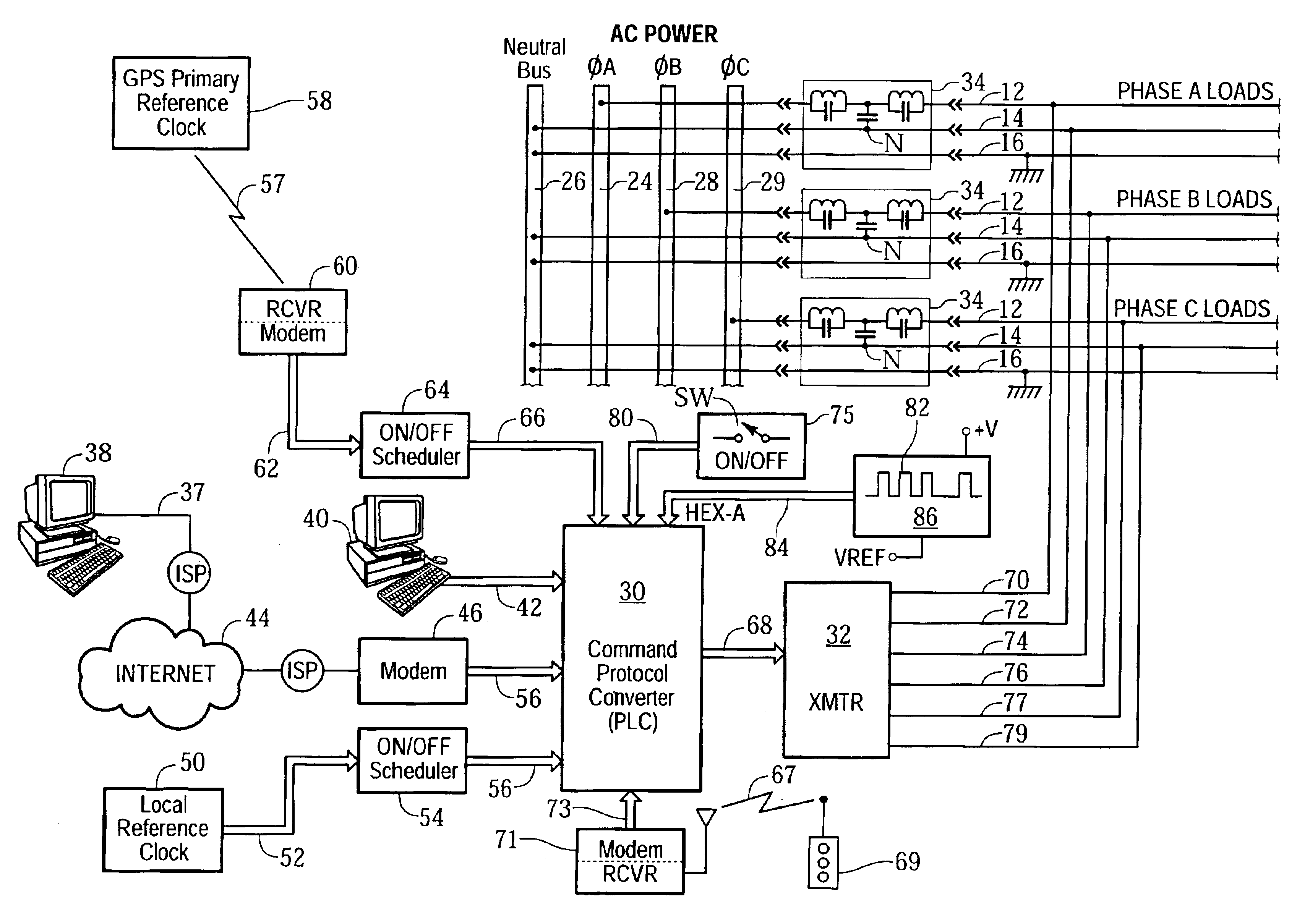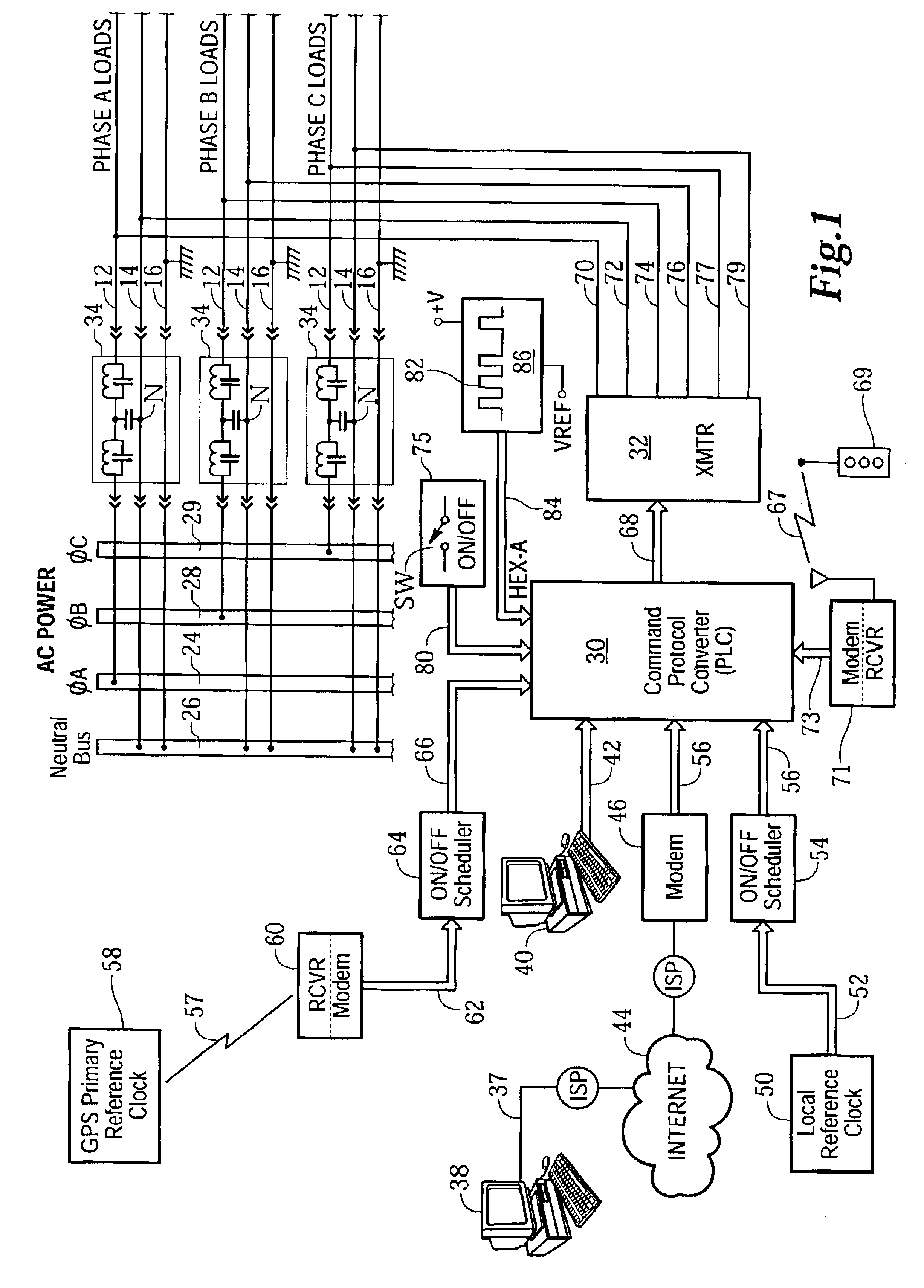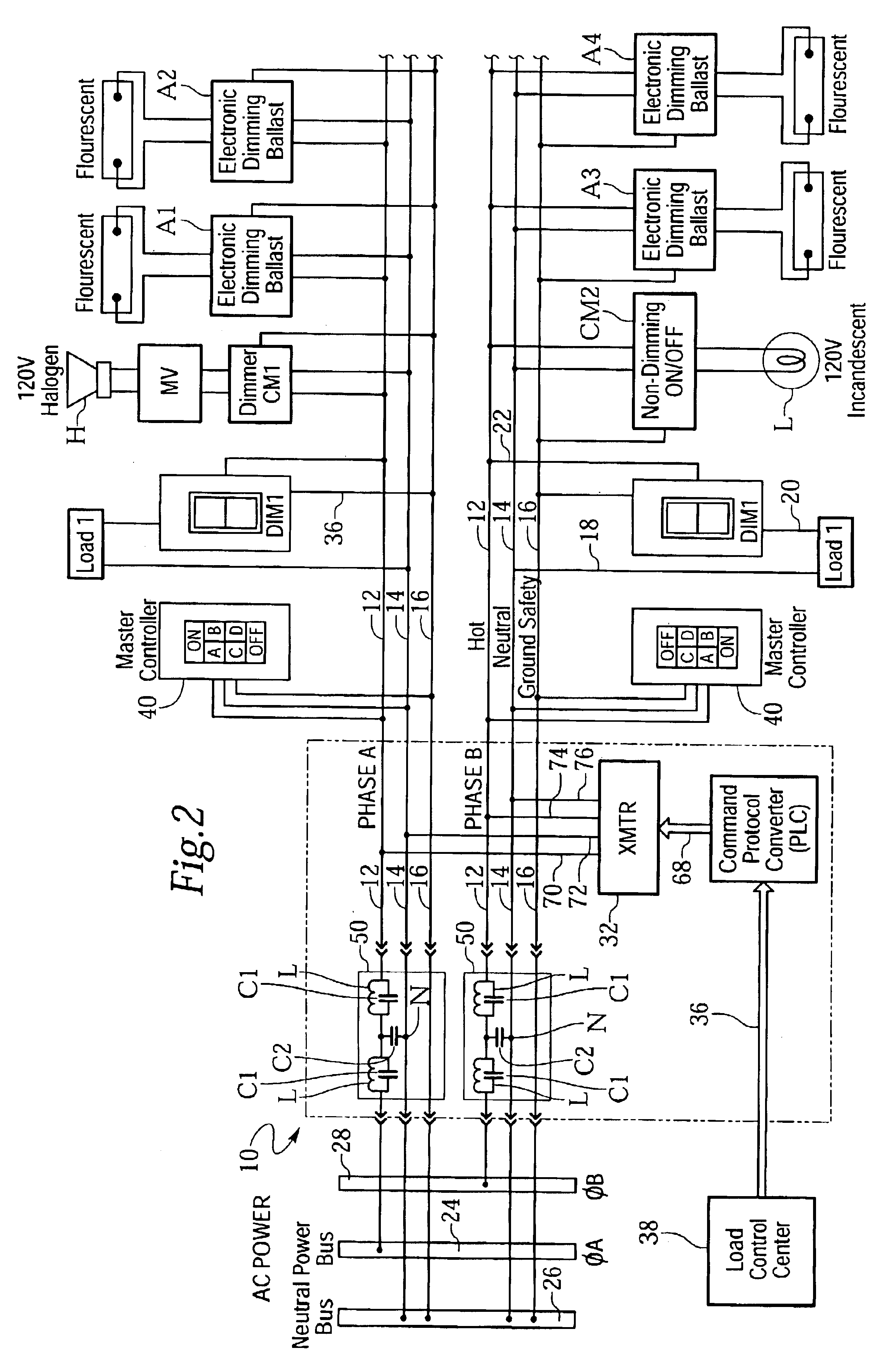Remotely accessible power controller for building lighting
a power controller and remote access technology, applied in the direction of electric controllers, ignition automatic control, instruments, etc., can solve the problems of inconformity, retrofit modification of existing building lighting control systems with additional control wiring, and inability to automatically shut off the light, so as to improve the reliability of power line carrier communications, prevent interference from external noise sources, and reduce the effect of electrical nois
- Summary
- Abstract
- Description
- Claims
- Application Information
AI Technical Summary
Benefits of technology
Problems solved by technology
Method used
Image
Examples
Embodiment Construction
A preferred embodiment of the invention will now be described with reference to various examples of how the invention can best be made and used. Like reference numerals are used throughout the description and several views of the drawing to indicate like or corresponding parts.
Referring now to FIG. 1 and FIG. 2, the power controller circuit 10 of the present invention will be described with reference to a typical AC power distribution system commonly used for 110 volts, 60 Hz AC power service, in which AC power is conducted via hot, neutral and ground safety power line conductors 12, 14 and 16, respectively in either three phases A, B and C (FIG. 1), or two phases A and B, (FIG. 2). The power lines of most electrical power distribution systems conduct alternating current (AC) at a selected operating voltage (e.g., 110 VAC, 120 VAC or 220 VAC) and power distribution frequency (usually 60 Hz in the U.S. and 50 Hz elsewhere) via one or more phases (e.g., single-phase, two-phase or thre...
PUM
 Login to View More
Login to View More Abstract
Description
Claims
Application Information
 Login to View More
Login to View More - R&D
- Intellectual Property
- Life Sciences
- Materials
- Tech Scout
- Unparalleled Data Quality
- Higher Quality Content
- 60% Fewer Hallucinations
Browse by: Latest US Patents, China's latest patents, Technical Efficacy Thesaurus, Application Domain, Technology Topic, Popular Technical Reports.
© 2025 PatSnap. All rights reserved.Legal|Privacy policy|Modern Slavery Act Transparency Statement|Sitemap|About US| Contact US: help@patsnap.com



